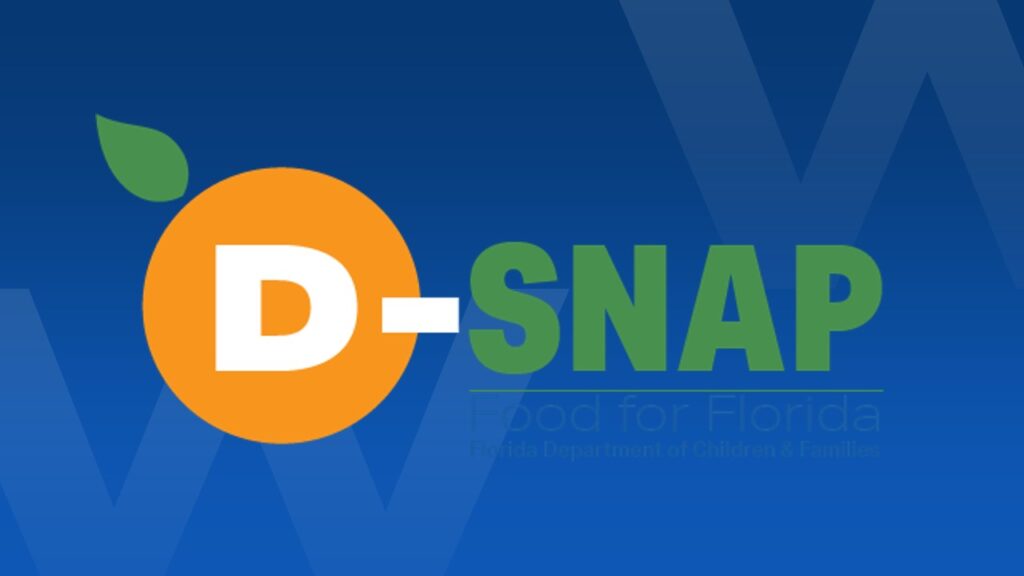Disaster Supplemental Nutrition Assistance Program (D-SNAP) is a governmental program created to provide more food resources to people in need during times of a disaster. The program ensures that those who have been impacted by a disaster are able to access additional assistance in order to purchase more food. The main goal of D-SNAP is to help vulnerable households recover after a disaster, while avoiding compromising their financial state. The supplemental benefits are used to replace some of the income that is typically used for food that can not be replaced or supplemented for the time being. D-SNAP helps to fill in the gap created when one’s normal food costs are no longer covered by the income they rely on.
History of D-SNAP
The D-SNAP program is managed under the United States Department of Agriculture (USDA). It was created as part of the 2008 Farm Bill, officially known as the Food, Conservation, and Energy Act. This bill was necessary as it was a large step for increasing the nutritional resources available to families who have been affected by disasters. D-SNAP became a permanent nutrition assistance program in January 2009. Since then, it has been used in 46 states and the District of Columbia, providing additional food assistance to 3.2 million people.
In May 2019, the State of Georgia requested that the United States Department of Agriculture (USDA) waive its normal Eligibility Verification Reviews (EVR) in order to speed up the implementation of the Disaster Supplemental Nutrition Assistance Program (D-SNAP). USDA was able to approve the waiver, enabling them to set up the program more quickly and get more resources available to those in need.
How Does D-SNAP Work?
D-SNAP works in three main steps. First, individuals in need must be approved by the local unemployment office. Second, approved individuals can then apply for D-SNAP benefits. The third step involves receiving the D-SNAP benefit cards which can then be used to purchase food.
In order to be approved for D-SNAP benefits, applicants must meet specific eligibility criteria. First, applicants must have been affected by a disaster declared by the President of the United States, the Governor of the state, or the Tribal Chairman of the affected Tribal Government. They must also demonstrate that they were either living in the affected area at the time of the disaster, or that they evacuated to the area due to the disaster.
Once approved, individuals are then able to apply for D-SNAP benefits. For example, in Georgia, applications must be submitted through their Get Georgia Benefits web portal. The application typically involves providing proof of the applicant’s identity, the household’s residence, and the household’s income and assets.
The last step is receiving the benefit cards which are then used to purchase food. The amount of the benefit is based on a formula that calculates the need based on the size of the household and the amount of income. In Georgia, the maximum benefit is $375 per person. The cards are issued by the state, are loaded onto the card within 7 days, and can be used at any store that accepts SNAP.
Who Can Receive D-SNAP Benefits?
D-SNAP benefits are available to individuals who have been approved by the local unemployment office and meet the specific eligibility requirements. These include individuals who were living in the affected area at the time of the disaster, those who have evacuated due to the disaster, low-income households and those receiving TANF (Temporary Assistance for Needy Families) or SSI (Supplemental Security Income) benefits.
Benefits of D-SNAP
The Disaster Supplemental Nutrition Assistance Program offers significant benefits to those individuals and families who have been affected by a disaster. D-SNAP benefits are provided quickly – within 7 days of application – allowing those affected to purchase food more easily.
The program also provides additional assistance to those with low incomes. This is particularly useful in times when the incomes of households have been disrupted. D-SNAP benefits can help those households recover financially by supplementing their food costs and provide the help to return to normal routines.
In addition to these benefits, the D-SNAP program is a cost-effective way for the government to assist those in need. By using a SNAP card, the government is able to distribute the funds efficiently and in a manner that limits fraud and abuse.
Final Thought
The Disaster Supplemental Nutrition Assistance Program (D-SNAP) is an important program designed to provide assistance to those individuals and families who have been affected by a disaster. Through a three-step process, households can receive additional assistance to help cover food costs during times when their normal income is insufficient.
D-SNAP provides numerous benefits to those affected, including the ability to purchase food quickly, additional assistance for those with low incomes, and cost-effective distribution of funds. D-SNAP has been extremely helpful in providing assistance ever since its inception in 2008 as part of the Farm Bill.
The Disaster Supplemental Nutrition Assistance Program (D-SNAP) is an invaluable program that has helped to provide much-needed resources to individuals and families during disasters. This program is able to quickly provide these resources in order to help loved ones transition back to their normal lives in times of hardship. Though it is a sad reality that disasters can strike and disrupt a community, it is comforting to know that resources exist to help those affected and get them back on their feet.

